On Tuesday, I posted an update showing fall work on a cork-bark black pine (see “Cutback” for details). Today I’d like to critique the tree and talk about design goals for future development.
For reference, here’s the tree after thinning the foliage and wiring key branches.
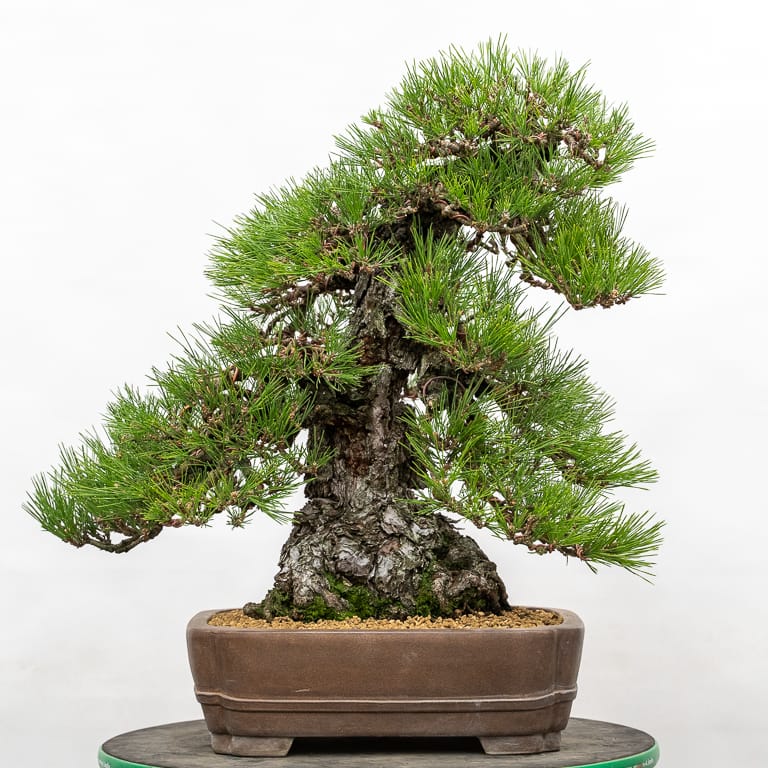
Cork-bark black pine in a Gyozan pot – 24″
Although I’ve been working on the tree for a long time, the work has been limited as I can’t bend old branches as much as I’d like without risk of breaking them. This is a common challenge when working with cork-bark varieties (see “Increasing branch density” for photos of the tree from 2004).
I am, however, free to bend the slender ends of branches, and it’s the arrangement of the slender branches that gives a tree much of it’s character.
Before discussing the the tree itself, do you know the “squint test”? When you partially close your eyes, you can see images without all of the details or colors that can distract us from seeing basic shapes. I’ve been squinting at paintings in museums for years and I do this with bonsai too. To help you visualize what I’m talking about, here’s the same image in black and white.
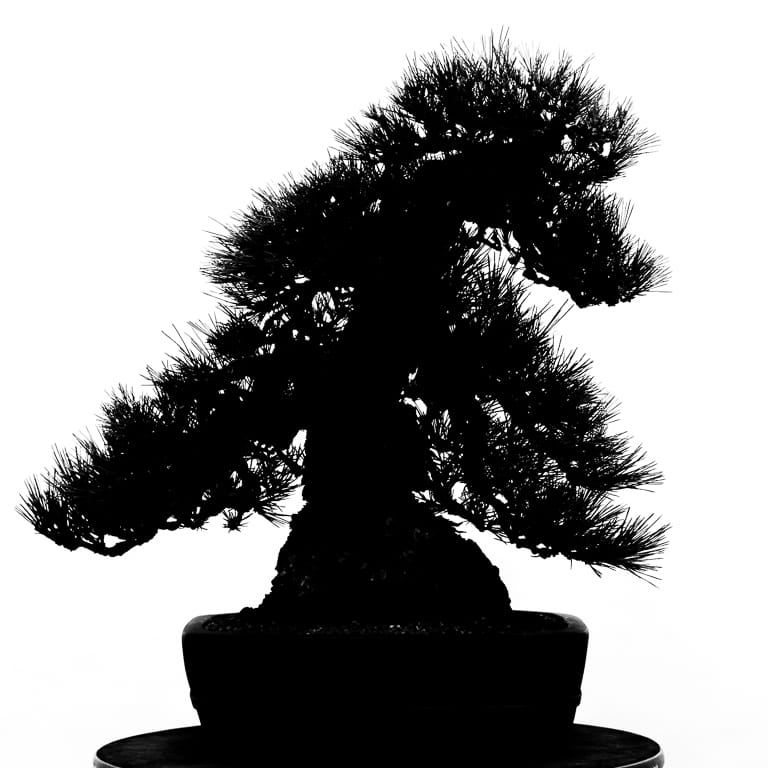
The pine in black and white
What’s funny is that even when I look at the black and white image, I still squint my eyes to get a sense of the blocks of foliage. This is what I notice.
- The lowest branches on both sides of the tree are similar in size, shape, and level (they’re roughly equidistant from the lip of the pot).
- The top of the tree seems separate from the lower portion due to the lack of branches on the upper right side.
- The crown blends in with the lower branches smoothly on the left side but there’s an awkward transition on the right side.
What can I do about this?
- The first branch on the left is slightly higher than the first branch on the right. I’d like for the first branch on the right to be higher. Because bending corked branches risks breaking them, I can achieve the same effect by shortening the first branch on the right.
- As for the gap on the upper right side, I can grow out branches on the back of the tree to fill in the silhouette.
- To create a smooth transition between the crown and the branch below it on the right side, I can shorten the branches on the crown after young buds develop that I can cut back to.
I’ve also thought about making more dramatic changes to the tree like changing the front or removing the top third of the tree. The reason I’ve maintained the current front is that it does a good job of conveying the tree’s character in the corked bark of the trunk. Plus, the branches are awkward from almost every other angle. Here’s the tree from the left, right, and back sides.
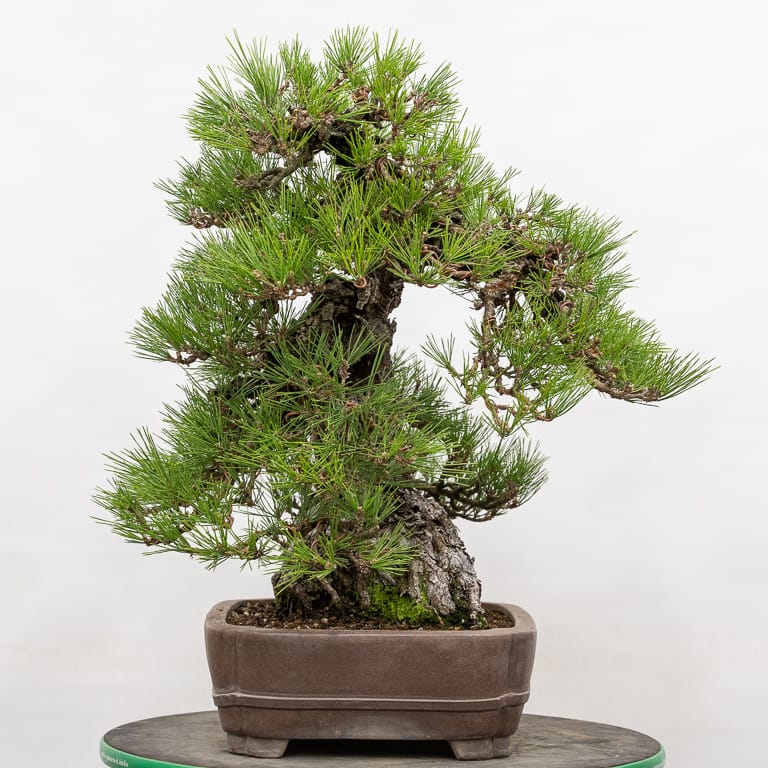
Right side
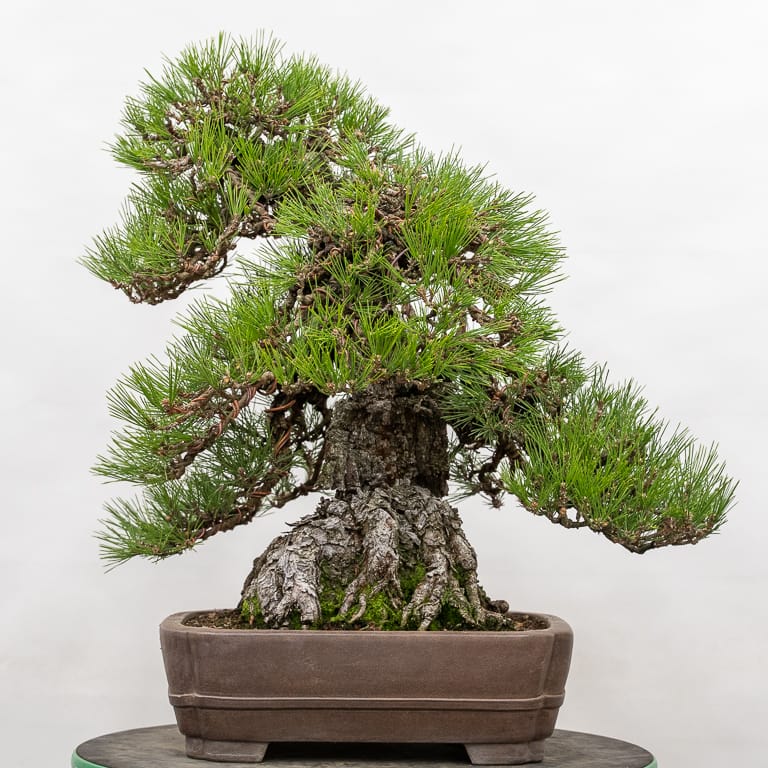
Back side
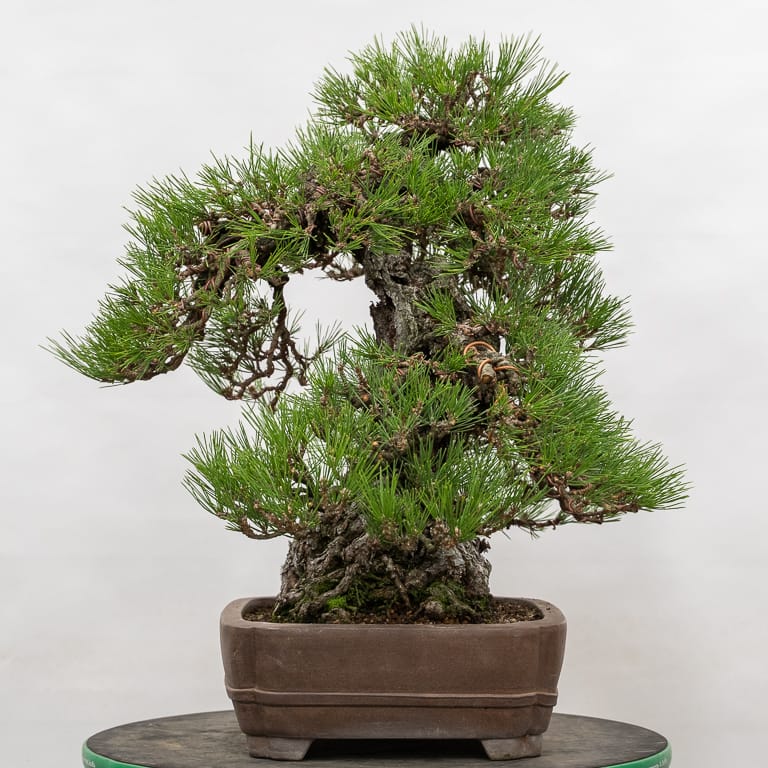
Left side
The view from the left side does a particularly good job revealing the awkward back branch that makes selecting other fronts challenging.
My favorite alternative is the view from the right side with the tree at a slight angle.
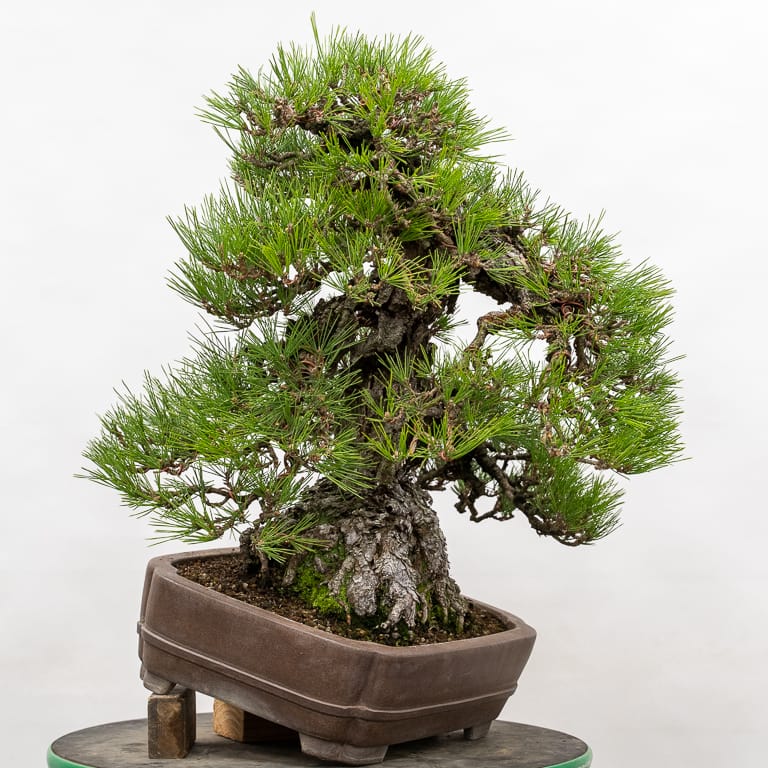
Alternative front
As nice as this side is, the base of the trunk is narrowest at this point and the tree has a single back branch from this angle that protrudes far from the trunk.
My favorite thing about the current front is that it makes the tree look old. It’s easy to appreciate the corked bark from this side, and the stooped apex and drooping branches do a great job of conveying the tree’s age.
Do you have suggestions for making improvements? If so, I’d love to hear them. Feel free to share your ideas in the comments below.
The post Setting design goals for refining mature bonsai appeared first on Bonsai Tonight.
